As part of SageRiver’s study of how wonder can inspire strategy, SageRiver’s founder, Susan Heinzeroth, sat down with author and management consultant Judy Goldberg. Following a cancer diagnosis in 2017, Judy realized that skills she spent a lifetime developing were helping her effect positive changes despite the health challenges she faced. Wanting to share those tools with others, she developed a newly published resource, titled “Wake Up and Wondershift: Five Themes and 50 Exercises Designed to Activate Wonder and Create Lasting Shifts.”
SageRiver (SR): Thank you for being with us, Judy. Let me start with a basic question. What do you mean by wonder?
Judy Goldberg (JG): When I speak of wonder, I’m referring primarily to the wonder within our own control or influence. My focus is on the wonder that runs through our bodies and gives us hints at what we should pay attention to next, or the wonder that challenges us to leave our comfort zones or bring new ideas to life.
SR: So, your book is about the personal shifts and personal wonder we can cultivate in ourselves?
JG: Yes, it’s about waking up to the wonder that’s within us. Because I believe it’s within all of us. We all have a voice that whispers, “I wonder if I…” or “I wonder when I can?” I want to help people wake up to that wonder and do something about it.
SR: The subtitle of your book suggests that activating wonder is essential to making lasting shifts. Why do you think we need to activate wonder?
JG: Because it’s linked to our goals and objectives and what we want out of life. At the same time, activating wonder requires intentionality. It means that we’re actively engaging in our experiences, situations and ideas in new ways. And if we’re not activating wonder, then we might be closing ourselves off to possibilities and going after the wrong goals and objectives.
SR: I couldn’t agree more. In fact, SageRiver’s tagline is Illuminating Possibility. Igniting Change. We chose that tagline because we want to help our clients see the larger landscape and imagine a broader range of capability. Do you find that it’s difficult for some people or teams to do that?
JG: Yes, and there are myriad reasons why. One is people will say there’s no time, right? Other people have a cognitive bias that relies on familiar patterns and experiences. I think people also have a fear of the unknown, or fixed mindsets or simply limited exposure to diverse experiences that enable them to imagine possibilities.
SR: So how do you help them break through those barriers?
JG: It needs to be intentional and incremental because there’s been so much research that shows that throwing people in a room and asking them to brainstorm on the spot is probably the worst thing you can do.
Instead, we need to help people practice creative thinking and expose them to new experiences. For example, I ask people to read different reviews on a topic and bring people together to then engage in a debate. That helps them shift their thinking into seeing two sides of a question. Another strategy I’ve tried is to take people on a field trip to somewhere they’ve never been. Little things like field trips can be eye-opening and help people imagine possibilities.
SR: Those are great suggestions. Within our own firm, we make it a practice to inspire and invest in the curiosity and wonder of our staff. Even if the connection to our work isn’t immediately obvious, we find that by following our wonder, we bring back new ways of thinking that infuse our strategy work.
JG: Exactly!
SR: You included the word “shift” in the title of your book. Can you briefly describe the five themes in your book that help us wake up to wonder and make positive shifts in our lives?
JG: I use S.H.I.F.T. as an acronym as well as an outcome. Each letter stands for a different theme that I explore in a section of the book.
- S is for Shape, which is about the power of mindset in forming our lives.
- H is for Harmony, which is about achieving inner harmony as well as harmony with others.
- I is for Imagine. This is where we let loose and let our imaginations run wild.
- F is for Focus, which is where we cut through the world of distractions and zoom in on what’s important to each of us.
- T is for Team, which helps us curate the team we need to make the shifts we desire.
SR: That’s a wonderful blueprint, and I highly recommend the exercises within your book and the creative thinking they spark. Before we close, is there one thing you’d like people to take away from our conversation about the value of wonder?
JG: I’ll share one of my favorite quotes: “A year from now, you will wish you had started today. So cross that threshold because your wonder awaits.”




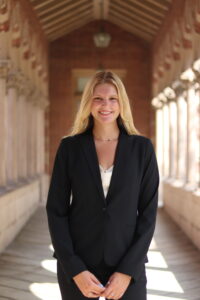 Addie Bouck (AB): I’ve always been interested in consulting. The project-based structure and the problem-solving focus really pulled me into the industry. SageRiver’s size—coupled with its clear focus on strategy—gives me a perfect opportunity to explore the industry while getting hands-on experience. I was also excited to work with this amazing team within a company culture that I find inspiring and enjoyable. The SageRiver culture is one I will look for in future jobs.
Addie Bouck (AB): I’ve always been interested in consulting. The project-based structure and the problem-solving focus really pulled me into the industry. SageRiver’s size—coupled with its clear focus on strategy—gives me a perfect opportunity to explore the industry while getting hands-on experience. I was also excited to work with this amazing team within a company culture that I find inspiring and enjoyable. The SageRiver culture is one I will look for in future jobs.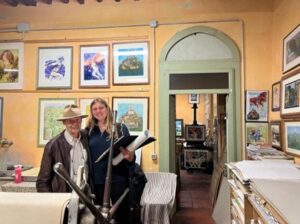 I also spent this past May in Barga, Italy, a small town just north of Lucca. with the wonderful artist Swietlan Nicholas (Nick) Kraczyna (pictured at left). He was my drawing professor during my semester abroad in Florence and is staging an exhibition commemorating the 50 summers he has spent creating art in Barga. He is a printmaker known for his multiplate color etchings, and he needed help producing the etchings for his show. I was lucky enough to learn from him and work in his print shop. It was a dream.
I also spent this past May in Barga, Italy, a small town just north of Lucca. with the wonderful artist Swietlan Nicholas (Nick) Kraczyna (pictured at left). He was my drawing professor during my semester abroad in Florence and is staging an exhibition commemorating the 50 summers he has spent creating art in Barga. He is a printmaker known for his multiplate color etchings, and he needed help producing the etchings for his show. I was lucky enough to learn from him and work in his print shop. It was a dream.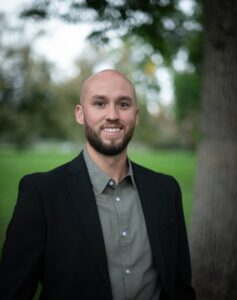 SageRiver (SR): Tell me about the role you have at SageRiver. What is your focus?
SageRiver (SR): Tell me about the role you have at SageRiver. What is your focus? It wasn’t how Mike Schaarschmidt expected to begin his new job at Ball Corporation.
It wasn’t how Mike Schaarschmidt expected to begin his new job at Ball Corporation.
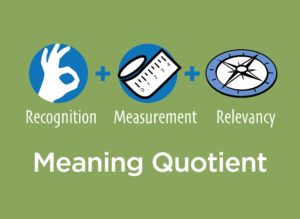 Without question, COVID-19 has caused tremendous loss and hardship in our community. We don’t want to minimize those difficulties, but we can appreciate the lessons this challenging period offers for us.
Without question, COVID-19 has caused tremendous loss and hardship in our community. We don’t want to minimize those difficulties, but we can appreciate the lessons this challenging period offers for us. Measurement: Driving Learning and Growth
Measurement: Driving Learning and Growth Nancy Lublin has a secret power. A serial entrepreneur, she launched Dress for Success immediately after college. Today, the nonprofit operates in 25 countries, providing professional clothing, coaching and support to more than one million women.
Nancy Lublin has a secret power. A serial entrepreneur, she launched Dress for Success immediately after college. Today, the nonprofit operates in 25 countries, providing professional clothing, coaching and support to more than one million women. We Do It on Principle. Principled organizations have done the hard work of defining their vision, mission, and values, engaging employees in strategy, and instilling professional practices. Along the way, these organizations gather input from partners, vendors, and customers to ensure buy-in and strategic alignment. You know what to expect from these companies because they deliver consistently, time after time.
We Do It on Principle. Principled organizations have done the hard work of defining their vision, mission, and values, engaging employees in strategy, and instilling professional practices. Along the way, these organizations gather input from partners, vendors, and customers to ensure buy-in and strategic alignment. You know what to expect from these companies because they deliver consistently, time after time.
 At SageRiver, we harness the power of mindfulness in team strategy, as well as executive coaching, sessions. We often begin our sessions with a mindfulness exercise to help participants let go of whatever stresses or demands they experienced that day. By grounding them in the moment and encouraging them to observe, welcome and honor thoughts and feelings, we set the tone for the work to come.
At SageRiver, we harness the power of mindfulness in team strategy, as well as executive coaching, sessions. We often begin our sessions with a mindfulness exercise to help participants let go of whatever stresses or demands they experienced that day. By grounding them in the moment and encouraging them to observe, welcome and honor thoughts and feelings, we set the tone for the work to come.
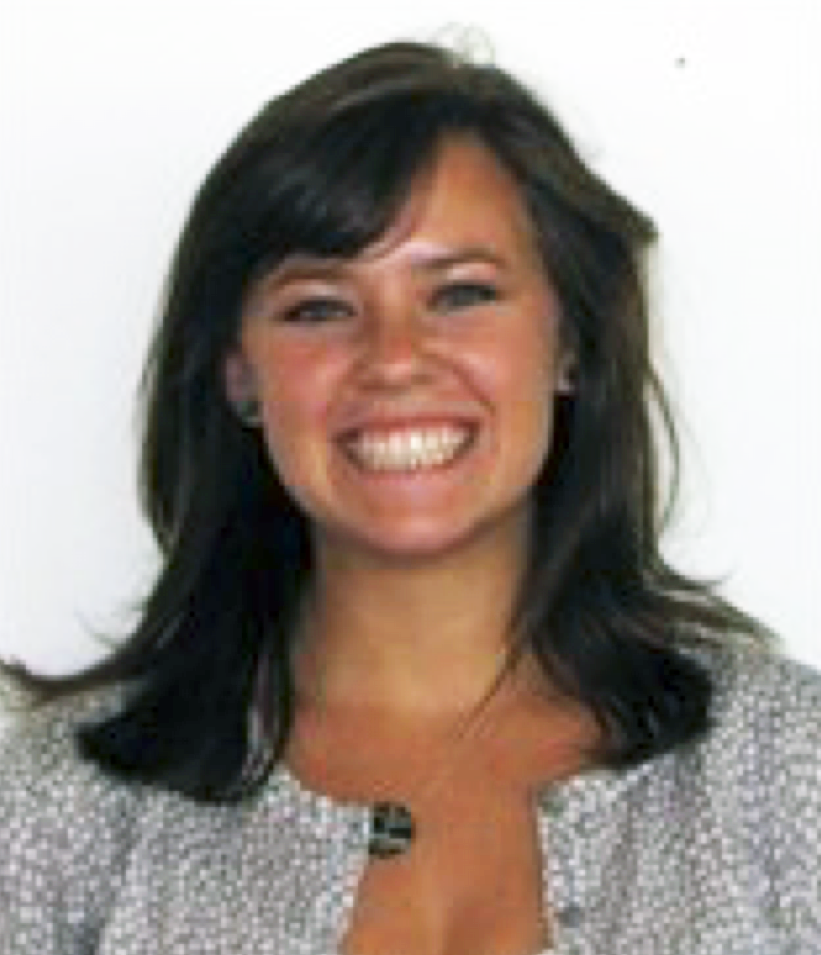 The year was 1979. In a basement in Madison, Wisconsin, an unknown software engineer named Judith Faulkner decided to launch a business. She had a novel idea, but the road ahead was uncertain. Her goal was to develop software that would enable healthcare providers to improve patient care.
The year was 1979. In a basement in Madison, Wisconsin, an unknown software engineer named Judith Faulkner decided to launch a business. She had a novel idea, but the road ahead was uncertain. Her goal was to develop software that would enable healthcare providers to improve patient care.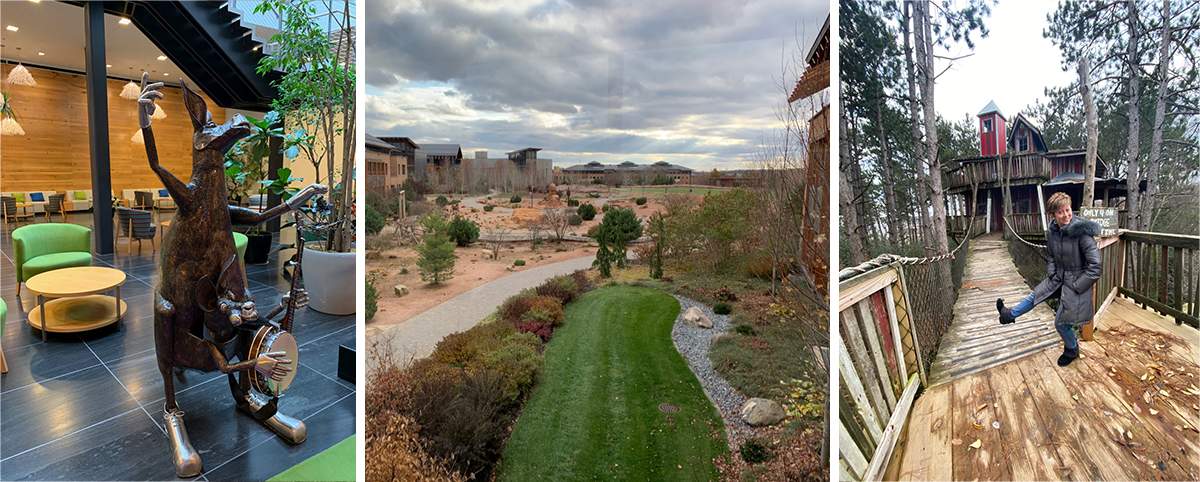

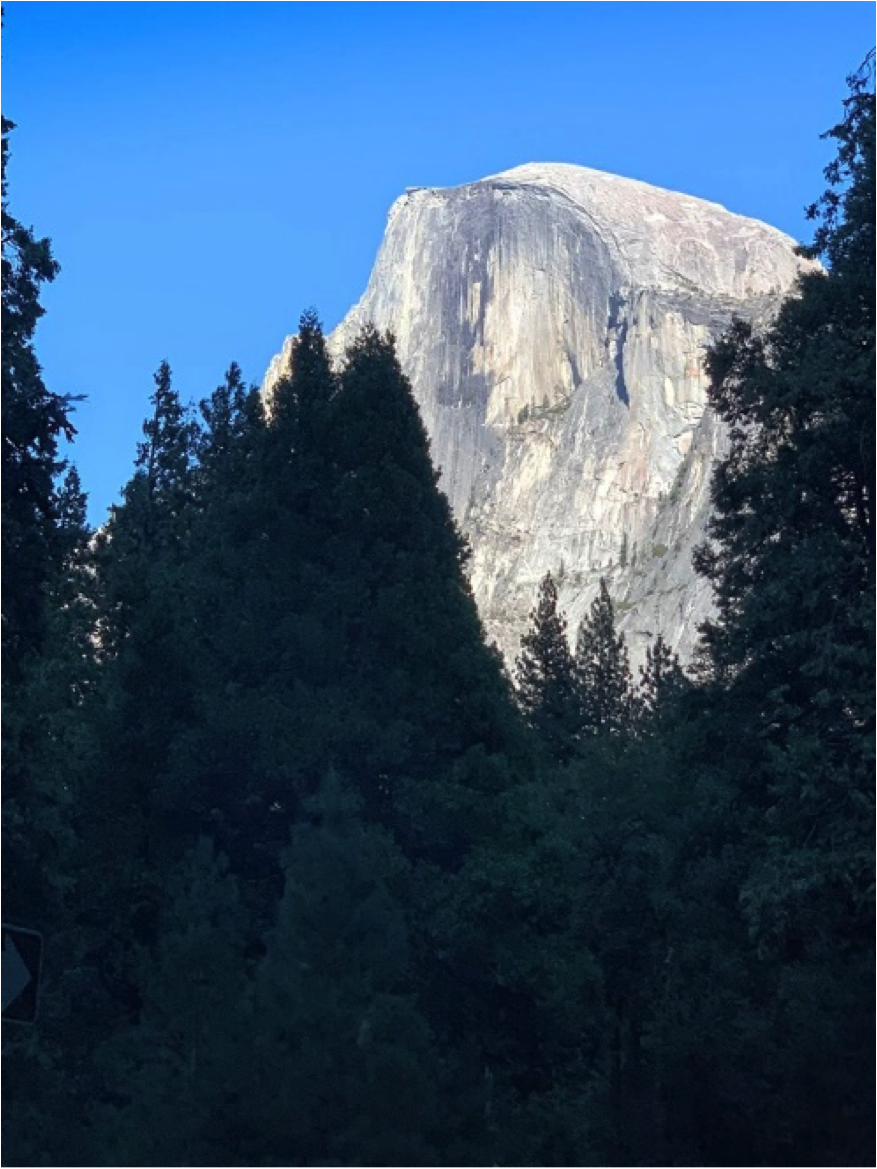 The sheer face of Half Dome loomed over us. We’d arrived at Yosemite Park just a few weeks after a woman fell to her death summiting the peak. Already wary of heights, I wasn’t sure I should attempt the entire climb, but I decided I would go as far as I could, understanding my own limitations.
The sheer face of Half Dome loomed over us. We’d arrived at Yosemite Park just a few weeks after a woman fell to her death summiting the peak. Already wary of heights, I wasn’t sure I should attempt the entire climb, but I decided I would go as far as I could, understanding my own limitations.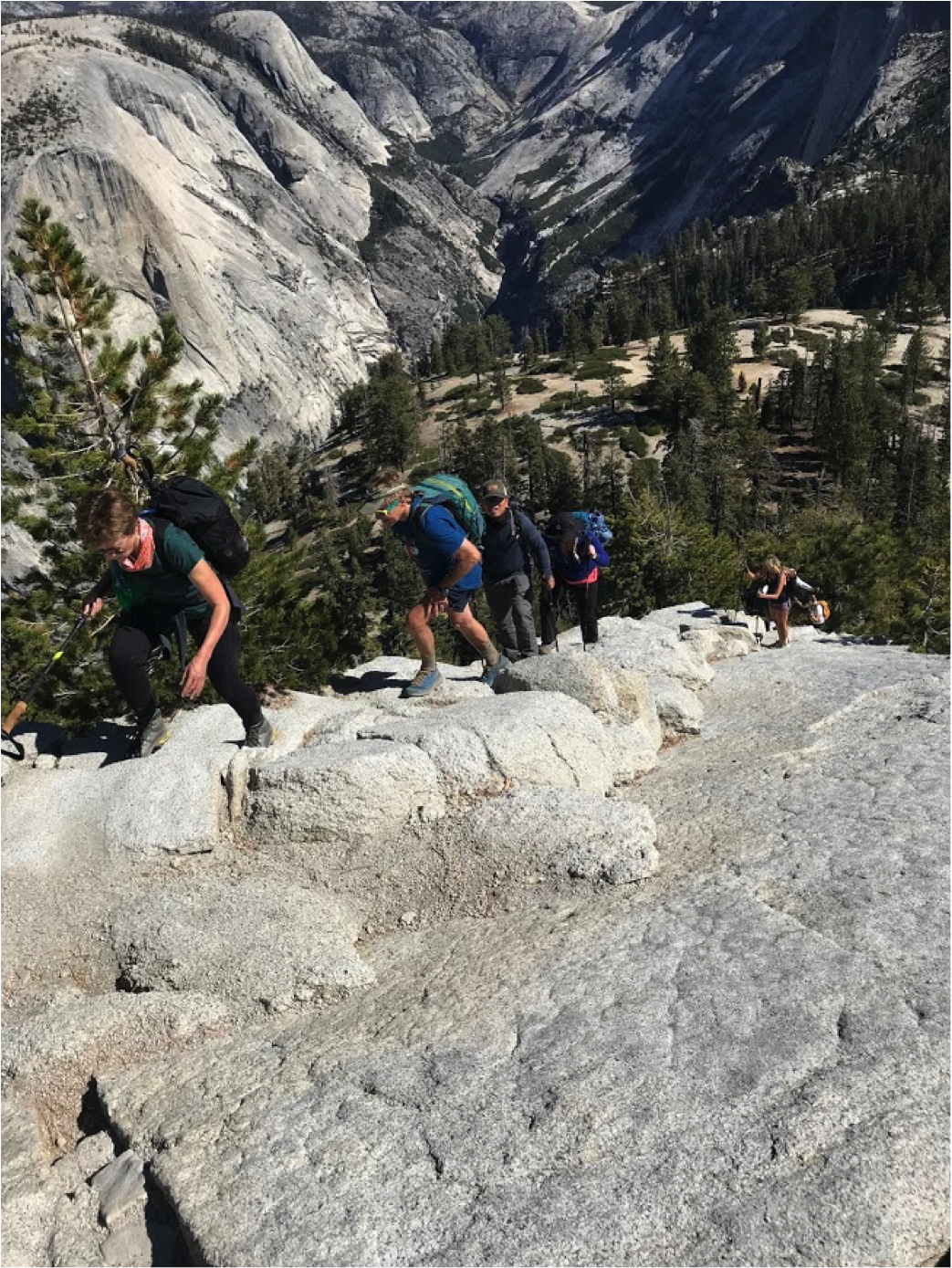 We’d been planning the trip for almost a year, and I’d been inspired by photos taken from Half Dome’s summit. I’d also read about the final 500-foot ascent, which requires climbers to cling to steel cables as they scale the face. Almost 300 people have been injured on Half Dome in the past 15 years, and the National Park Service warns that only experienced hikers should climb it.
We’d been planning the trip for almost a year, and I’d been inspired by photos taken from Half Dome’s summit. I’d also read about the final 500-foot ascent, which requires climbers to cling to steel cables as they scale the face. Almost 300 people have been injured on Half Dome in the past 15 years, and the National Park Service warns that only experienced hikers should climb it.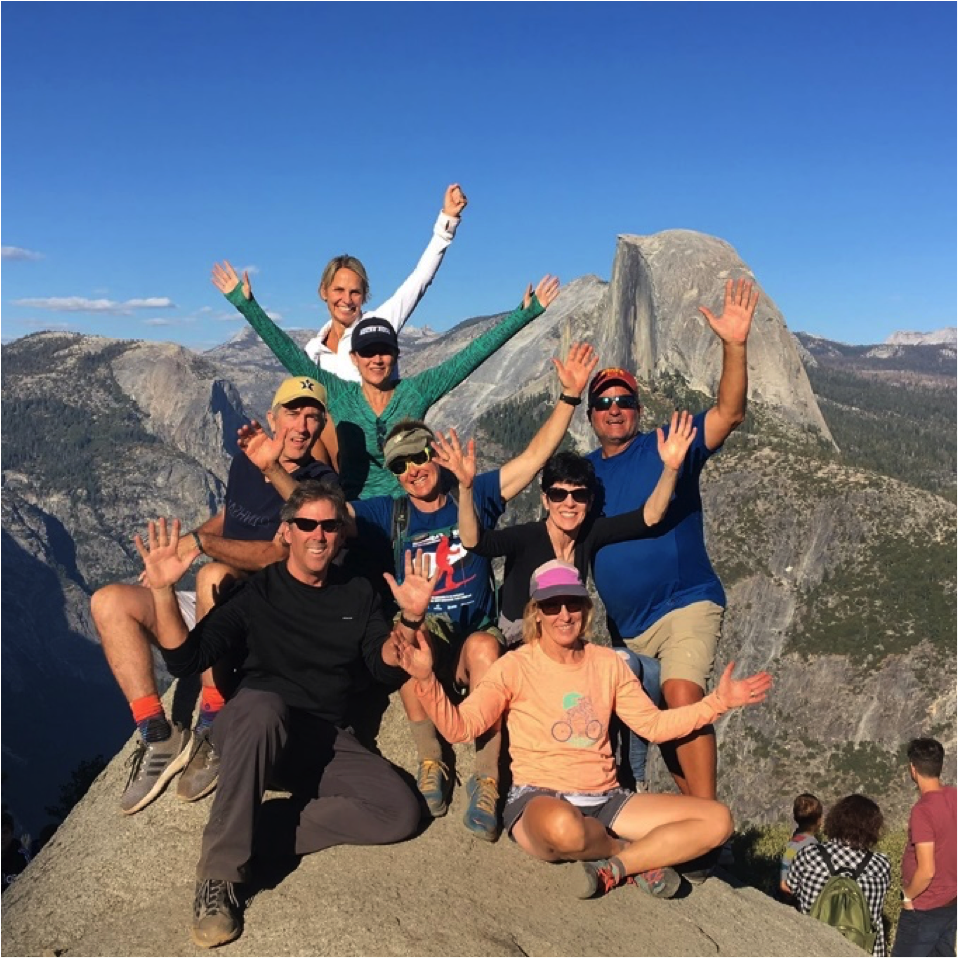 So often, we think of adventures as risky leaps into the unknown. What my trip reminded me was that adventures come in all shapes and sizes, and we can scale them to our needs, resources, skills and conditions. In the end, adventures require equal parts head and heart—what I call “smart courage”—to challenge us without harming us.
So often, we think of adventures as risky leaps into the unknown. What my trip reminded me was that adventures come in all shapes and sizes, and we can scale them to our needs, resources, skills and conditions. In the end, adventures require equal parts head and heart—what I call “smart courage”—to challenge us without harming us. As a team builder and executive coach, I know leaders worry about keeping their workforce motivated. Disengaged employees lower morale and cause productivity to plummet. If the problem persists, it can have serious consequences for the whole organization.
As a team builder and executive coach, I know leaders worry about keeping their workforce motivated. Disengaged employees lower morale and cause productivity to plummet. If the problem persists, it can have serious consequences for the whole organization.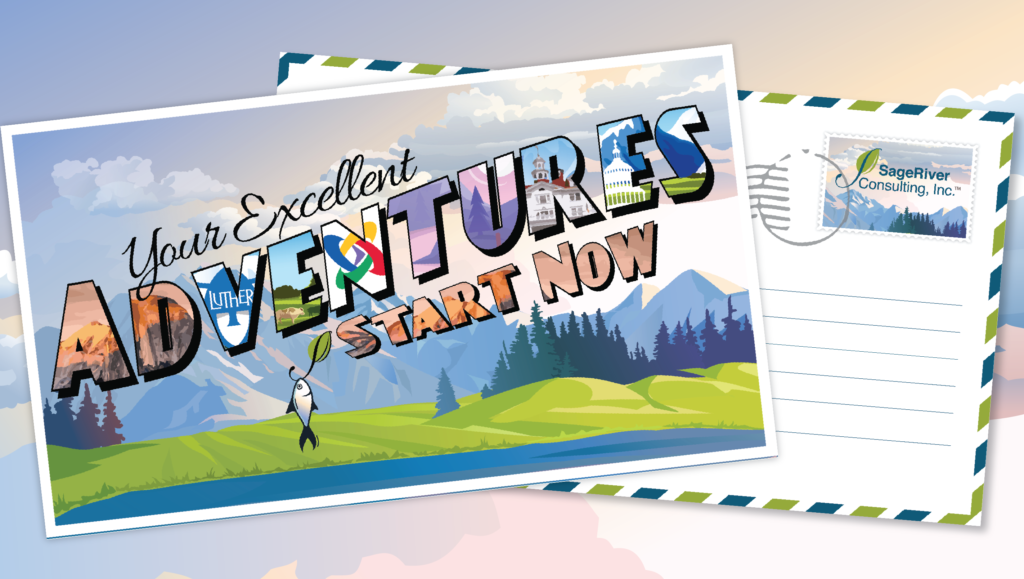 I watch “The Wizard of Oz” now and again. Magical and wise, it always pulls me under its spell. I feel Dorothy’s yearning to fly over the rainbow, and when she opens the door from her black-and-white house to technicolor Oz, wonder ensues.
I watch “The Wizard of Oz” now and again. Magical and wise, it always pulls me under its spell. I feel Dorothy’s yearning to fly over the rainbow, and when she opens the door from her black-and-white house to technicolor Oz, wonder ensues.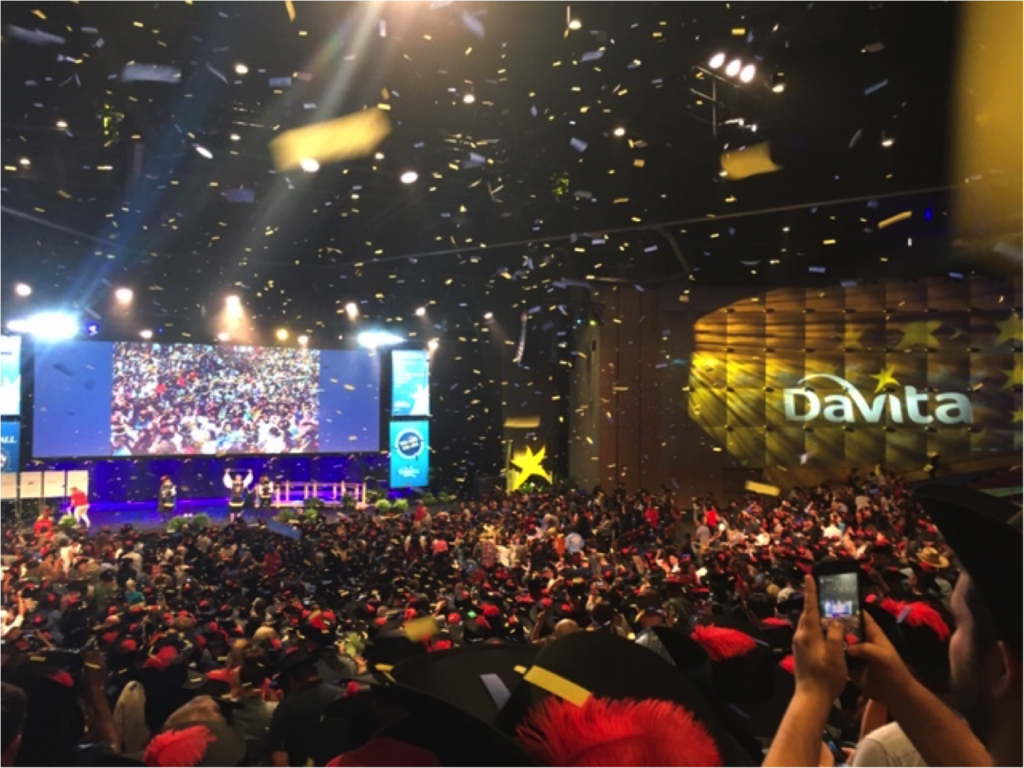 The excitement grew as employees flipped the posters to reveal six winning words and then placed them in a new order. When the audience realized the words formed the acronym “WE CARE,” they rose for a thunderous ovation.
The excitement grew as employees flipped the posters to reveal six winning words and then placed them in a new order. When the audience realized the words formed the acronym “WE CARE,” they rose for a thunderous ovation.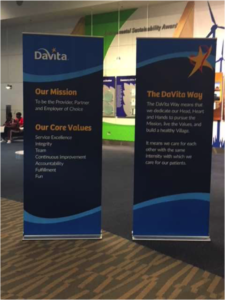 Why does defining behaviors matter? Because the workplace today includes five generations working across time zones and cultures at a faster pace than ever. Given those factors, employees may understand company values differently without even realizing it. By tying values to specific actions, companies like DaVita help develop a shared understanding that allows teammates to better accomplish their purpose.
Why does defining behaviors matter? Because the workplace today includes five generations working across time zones and cultures at a faster pace than ever. Given those factors, employees may understand company values differently without even realizing it. By tying values to specific actions, companies like DaVita help develop a shared understanding that allows teammates to better accomplish their purpose.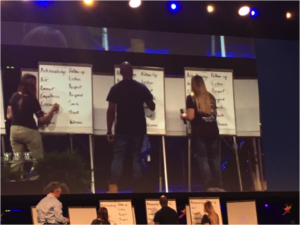 Rather than simply announce the final result, DaVita engaged teammates in an exciting interactive event. The unveiling included more than 2,000 teammates attending the Academy and thousands of others streaming in live from across the globe. Three teammates came on stage to engage this world-wide audience in guessing which six of the final 14 behaviors had been voted the winners.
Rather than simply announce the final result, DaVita engaged teammates in an exciting interactive event. The unveiling included more than 2,000 teammates attending the Academy and thousands of others streaming in live from across the globe. Three teammates came on stage to engage this world-wide audience in guessing which six of the final 14 behaviors had been voted the winners.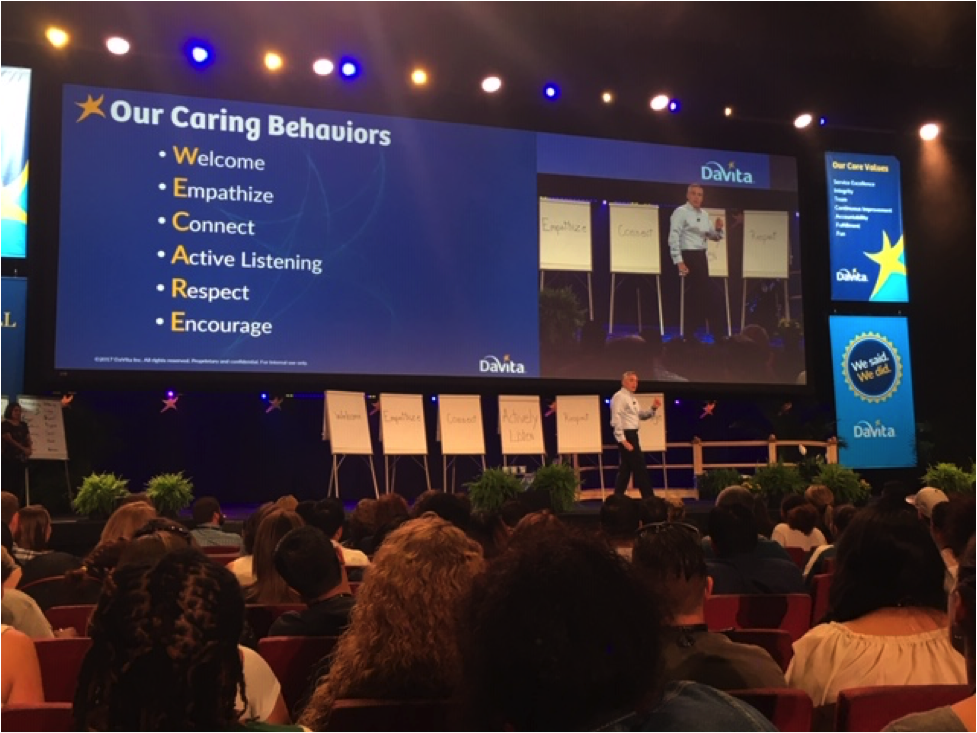 Continuing the Journey
Continuing the Journey Your board of directors has selected a new leader for your organization. Smart and dynamic, the leader sends a jolt of energy through the company.
Your board of directors has selected a new leader for your organization. Smart and dynamic, the leader sends a jolt of energy through the company. A conversation with Layer 10 Consulting
A conversation with Layer 10 Consulting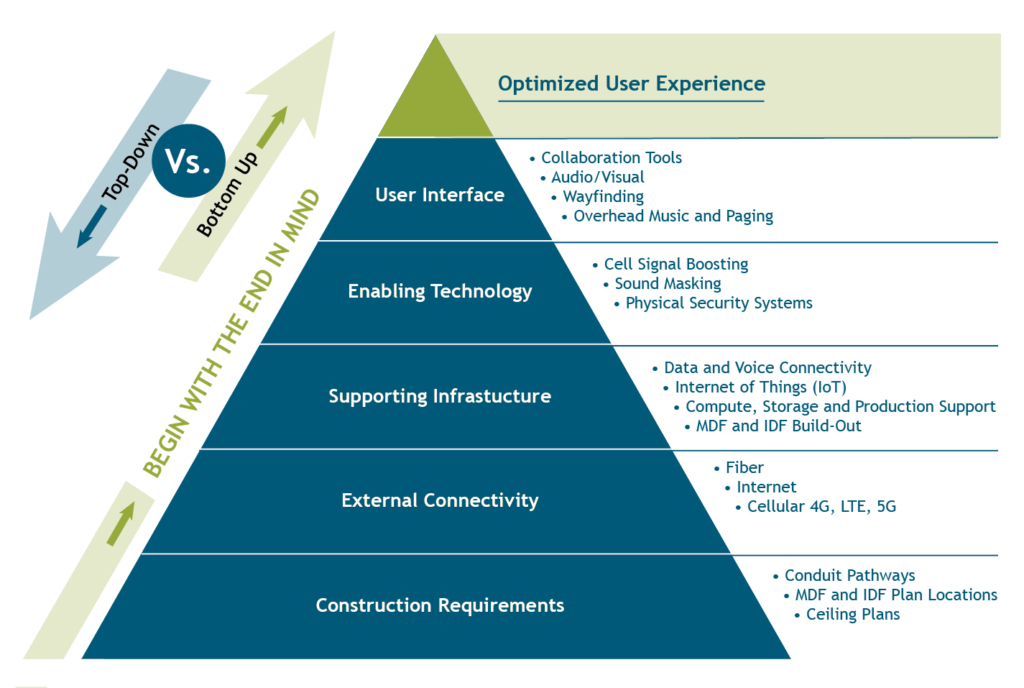 SR: Based on your experience, do you believe technology drives culture change?
SR: Based on your experience, do you believe technology drives culture change?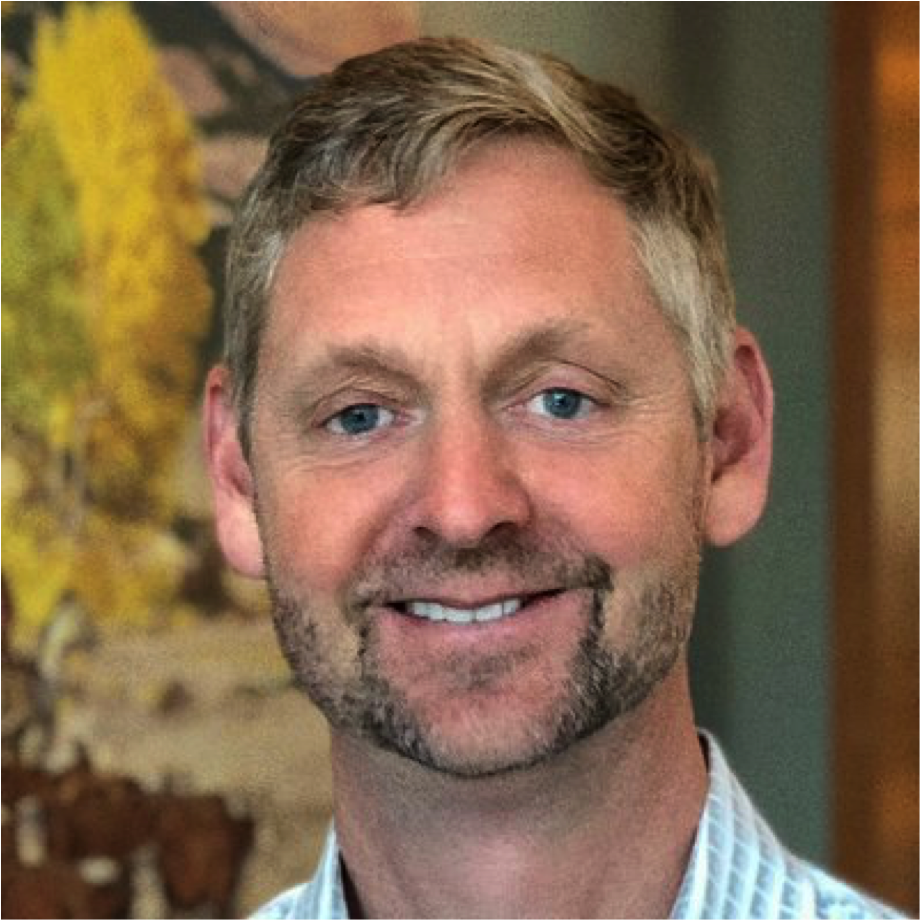 At DaVita, Modupe’s story has special resonance because it speaks to the core purpose of the company, which is to nurture the well-being of the community. This belief is so central that employees, who call themselves “teammates,” refer to their company as a village.
At DaVita, Modupe’s story has special resonance because it speaks to the core purpose of the company, which is to nurture the well-being of the community. This belief is so central that employees, who call themselves “teammates,” refer to their company as a village.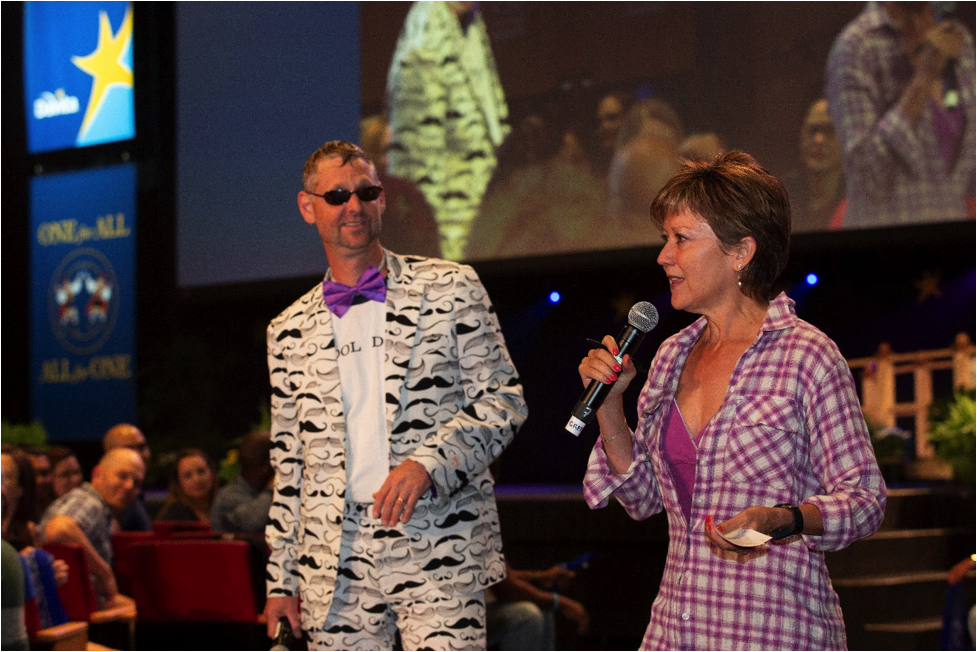

 Deposits in the Village Bank
Deposits in the Village Bank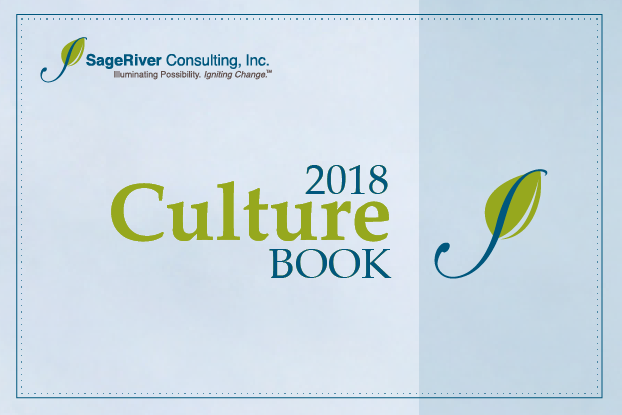 I approach each new consulting engagement with the eye of an anthropologist. I’m listening for business needs, but I’m also looking for signs about the beliefs, values, norms and traditions of the company. I want to understand the company culture, so I can engage and contribute effectively.
I approach each new consulting engagement with the eye of an anthropologist. I’m listening for business needs, but I’m also looking for signs about the beliefs, values, norms and traditions of the company. I want to understand the company culture, so I can engage and contribute effectively.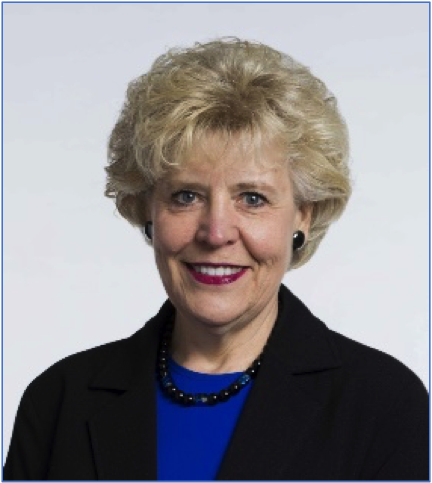 You Say You Want a Revolution
You Say You Want a Revolution
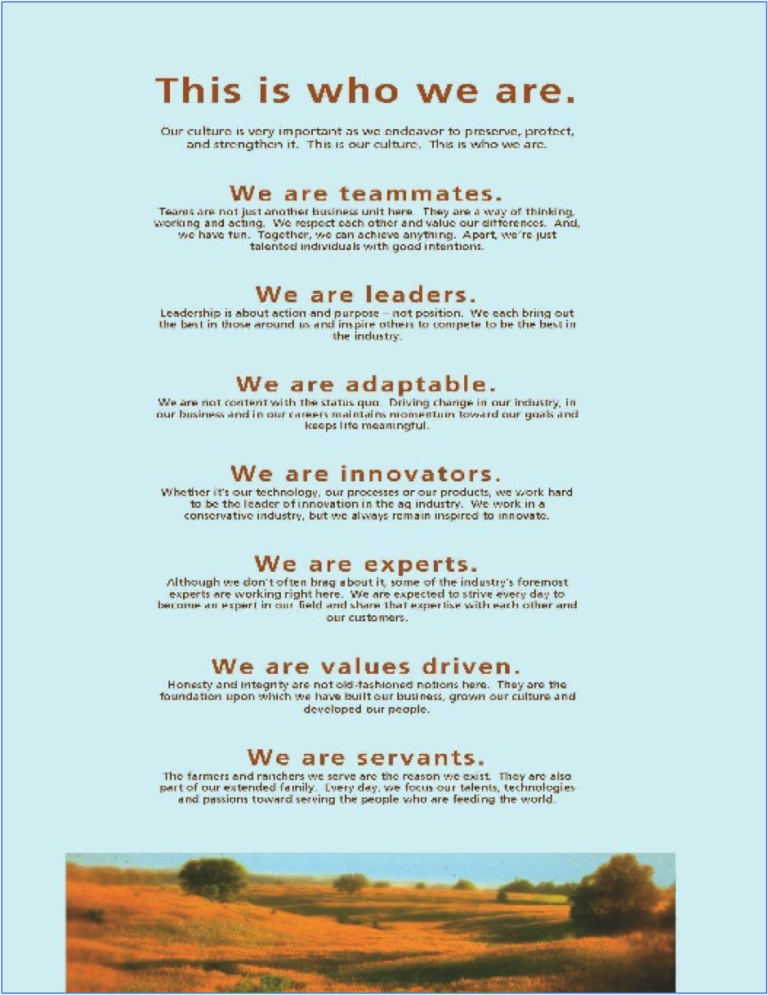 New team members receive what Finkner calls “culture in a box”—literally a box including items that represent aspects of FCSA’s culture. In addition, new hires attend executive-led sessions that explore FCSA values and programs, such as new employee orientation, well-being and leadership development.
New team members receive what Finkner calls “culture in a box”—literally a box including items that represent aspects of FCSA’s culture. In addition, new hires attend executive-led sessions that explore FCSA values and programs, such as new employee orientation, well-being and leadership development. The Institute for Career Advancement Needs (ICAN) has been building authentic, whole-life leaders for more than 35 years. SageRiver sat down with Julie Burrell Lillig, director of strategic partnerships at ICAN, to learn about ICAN’s unique philosophy and approach to supporting leaders at each stage of the development journey.
The Institute for Career Advancement Needs (ICAN) has been building authentic, whole-life leaders for more than 35 years. SageRiver sat down with Julie Burrell Lillig, director of strategic partnerships at ICAN, to learn about ICAN’s unique philosophy and approach to supporting leaders at each stage of the development journey.